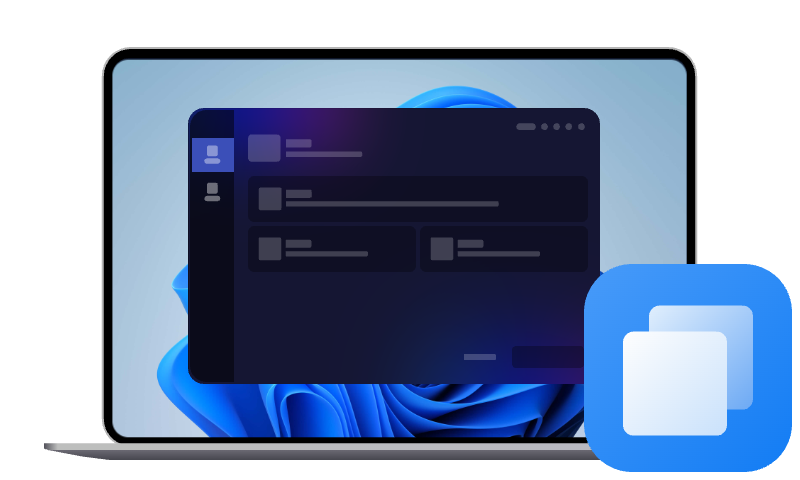How to Replace Laptop Hard Drive Without Reinstalling Windows
Replacing a laptop hard drive without reinstalling Windows can save time and prevent data loss. By using disk cloning software, you can transfer your operating system, applications, and files to a new drive seamlessly. This guide walks you through the process, from preparation to installation, ensuring a smooth transition without the hassle of reinstalling Windows.
Upgrading or replacing a laptop (Dell, HP, Acer, ASUS, Lenovo, etc.) hard drive is a common need for users looking to improve storage capacity, and speed, or fix a failing drive. However, many users worry about the hassle of reinstalling Windows, reconfiguring settings, and losing personal data.
Fortunately, you can replace your laptop’s hard drive without reinstalling Windows by cloning the existing disk onto the new one. This method ensures that your operating system, applications, and files remain intact, allowing you to continue using your laptop seamlessly.
In this guide, we will explore whether reinstalling Windows is necessary when replacing a hard drive, provide a step-by-step process to replace your laptop hard drive without reinstalling Windows, and answer some common questions regarding this process.
How to Replace Laptop Hard Drive Without Reinstalling Windows
To replace your laptop hard drive without reinstalling Windows, follow these steps:
|
☀ Key Takeaways of Laptop Hard Drive Replacement without OS Reinstalling |
|
Step 1: Prepare for the Hard Drive Replacement >> Full steps Step 2: Connect the New Hard Drive to Your Laptop >> Full steps Step 3: Clone the Old Hard Drive to the New One >> Full steps Step 4: Replace the Old Hard Drive with the New One >> Full steps Step 5: Boot from the New Hard Drive >> Full steps |
Step 1: Prepare for the Hard Drive Replacement
Before proceeding, gather the following tools and components:
- A new hard drive or SSD – Ensure that it has enough storage space for your data. If upgrading from an HDD to an SSD, you’ll benefit from improved speed and performance.
- A SATA-to-USB adapter or external enclosure – This allows you to connect the new drive to your laptop via USB for cloning.
- Reliable disk cloning software – AOMEI Cloner is a reliable backup and cloning software that helps users protect data, migrate systems, and clone disks for upgrades. With easy-to-use features, it ensures seamless data transfer and recovery.
- A screwdriver – To open the laptop and replace the hard drive.
Step 2: Connect the New Hard Drive to Your Laptop
Using a SATA-to-USB adapter or an external enclosure, connect the new hard drive to your laptop. The operating system should recognize it as an external storage device. If it doesn’t appear, ensure that it is properly connected and initialized in Disk Management (Windows).
Step 3: Clone the Old Hard Drive to the New One
Cloning your hard drive ensures that everything, including Windows, applications, and files, is transferred to the new drive. Follow these steps:
1. Install and open disk cloning software – For this guide, we’ll use AOMEI Cloner.
2. Select "Disk Clone" –Open AOMEI Cloner and click "Disk Clone" on the Clone tab. This option will copy everything from the old drive to the new one.
3. Choose the source disk – Select your current hard drive.
4. Choose the destination disk – Select the new hard drive.
5. Enable SSD optimization (if applicable) – If cloning to an SSD, check the option for optimizing SSD performance.
6. Start the cloning process – The software will begin copying all data. This may take some time depending on the size of your drive.
Step 4: Replace the Old Hard Drive with the New One
Once the cloning process is complete, follow these steps to physically install the new hard drive in your laptop:
1. Power off your laptop and disconnect the charger.
2. Remove the laptop’s back cover using a screwdriver. If unsure, check your laptop’s manual for specific instructions.
3. Locate the hard drive bay and carefully disconnect the old hard drive.
4. Insert the new hard drive into the same slot, ensuring it is securely connected.
5. Reassemble your laptop and tighten the screws.
Step 5: Boot from the New Hard Drive
When you turn on your laptop, it should boot from the new hard drive automatically. If it doesn’t, follow these steps:
1. Enter the BIOS/UEFI by pressing F2, F12, DEL, or ESC (varies by manufacturer) during startup.
2. Navigate to the Boot Order section.
3. Set the new hard drive as the primary boot device.
4. Save changes and exit BIOS.
Your laptop should now boot into Windows exactly as it was before, with all your settings and files intact.
Do You Need to Reinstall Windows If You Replace the Hard Drive?
Many users assume that replacing a laptop’s hard drive requires reinstalling Windows, but this is not always the case. The need to reinstall Windows depends on how you transfer data from the old drive to the new one. Let’s explore two possible scenarios:
Scenario 1: Replacing the Hard Drive Without Cloning
If you replace your laptop’s hard drive without cloning the old drive, you will need to reinstall Windows manually. This process involves:
- Creating a bootable USB drive with Windows installation media.
- Performing a clean installation of Windows.
- Reinstalling all drivers and applications.
- Restoring personal files from a backup.
While this method ensures a fresh start, it is time-consuming and may lead to data loss if not backed up properly.
Scenario 2: Replacing the Hard Drive With Cloning
By using disk cloning software, you can copy your existing Windows installation, applications, and data directly to the new hard drive. This approach eliminates the need for reinstallation and ensures a smooth transition. Cloning is the best option for users who want to avoid reinstalling Windows and keep their system as it is.
Conclusion
Replacing a laptop hard drive without reinstalling Windows is a straightforward process if you use disk cloning software. By following the steps outlined in this guide, you can seamlessly upgrade your storage without losing data, reinstalling programs, or reconfiguring Windows. Cloning your old drive to a new one ensures that your laptop remains fully functional with minimal downtime.
If you are upgrading to an SSD, you’ll notice significant improvements in boot speed and overall system performance. Whether you are replacing a failing drive or upgrading for better storage, this method is the most efficient way to keep your laptop running smoothly.
FAQs on How to Upgrade HDD to SSD on Laptop
1. Can I clone my hard drive to a smaller SSD?
Yes, you can clone a larger HDD to a smaller SSD, but the used space on the HDD must fit within the SSD’s capacity. Most cloning software provides an option to adjust partitions automatically during the cloning process.
2. Will my Windows activation remain valid after cloning?
Yes, as long as the motherboard remains the same, your Windows activation should remain intact after cloning the hard drive.
3. What should I do if my laptop doesn’t boot after replacing the hard drive?
If your laptop does not boot after replacing the hard drive, check the BIOS settings to ensure the new drive is set as the primary boot device. Additionally, ensure that the cloning process was completed successfully without errors.

